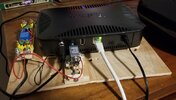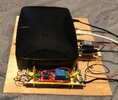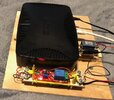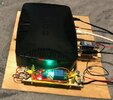I am sorry I didn't make this clear.
After my initial test circuit trial failed after checking connections and various other things I finally just hooked the solenoid directly to the power supply.
Doing that I am getting very sporadic firing of the solenoid.
The solenoid checks out always at 56.4 ohms.
The power supply by itself always gives 12v to my volt ohm meter.
But when I hook the power supply up to the solenoid it mostly doesn't work. At the connections when the solenoid isn't working there's nothing. But when the solenoid does trigger I get 12v from my meter.
I can't swear those 2 sets of wires twisted together give a good connection but my intuition is it should be adequate.
Today I am buying some terminal end fittings for the wires and a new power supply because it's not that expensive.
After my initial test circuit trial failed after checking connections and various other things I finally just hooked the solenoid directly to the power supply.
Doing that I am getting very sporadic firing of the solenoid.
The solenoid checks out always at 56.4 ohms.
The power supply by itself always gives 12v to my volt ohm meter.
But when I hook the power supply up to the solenoid it mostly doesn't work. At the connections when the solenoid isn't working there's nothing. But when the solenoid does trigger I get 12v from my meter.
I can't swear those 2 sets of wires twisted together give a good connection but my intuition is it should be adequate.
Today I am buying some terminal end fittings for the wires and a new power supply because it's not that expensive.







